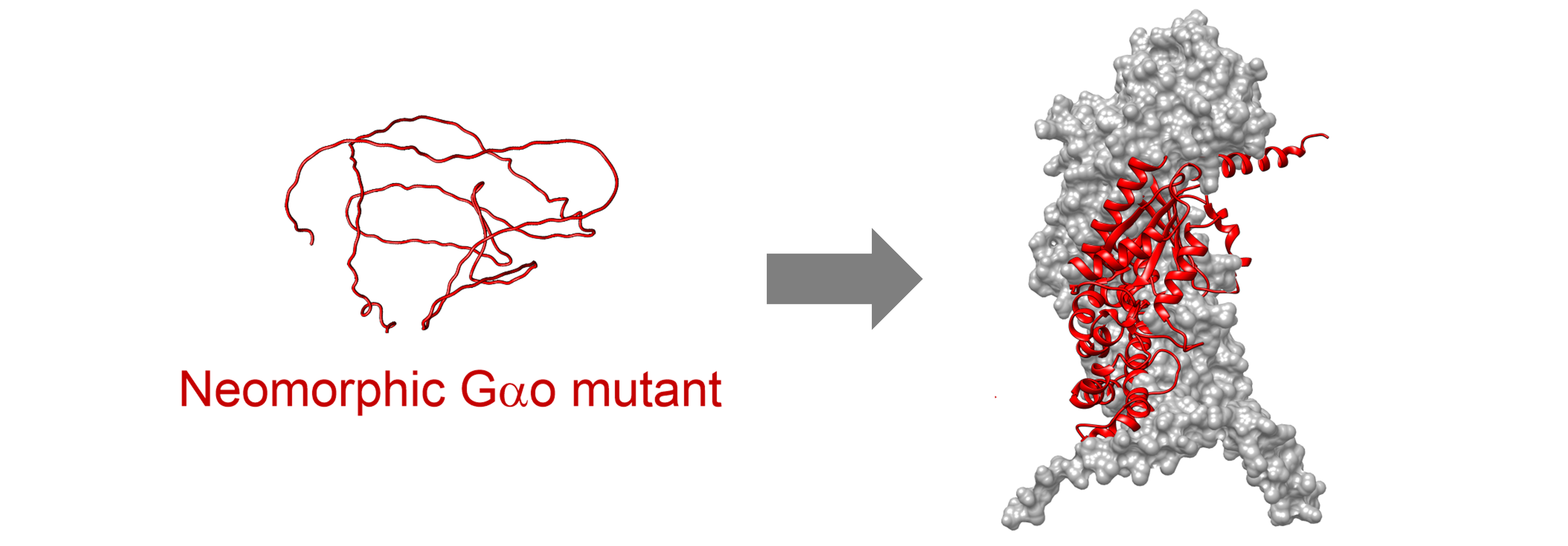GNAO1 encephalopathies: a new biomarker to predict disease severity
GNAO1 encephalopathies are a rare disease leading to epilepsy, severe motor dysfunctions, and intellectual disability from birth. This genetic disease is caused by mutations in the GNAO1 gene. The large number of mutations involved limits the identification of universal therapeutic strategies and calls for a better understanding of the underlying mechanisms.
The strength of a molecular interaction…
After many years of research on the protein coded by the GNAO1 gene, Gαo, the researchers from the laboratory of Prof. Vladimir Katanaev discovered that most mutations do not cancel or accelerate its function, but give it a whole new one. As described in their recent paper in the Journal of Clinical Investigation, these so-called neomorphic Gαo mutants, instead of briefly binding to other proteins responsible for their final shape, the Ric8A/B chaperones, stay bound to it. This very strong connection makes it impossible for the Ric8A/B chaperones to process all the other Gα subunits present in the brain, thus disbalancing the entire neuronal GPCR signaling network that depends on Gα subunits.
… correlates with the degree of severity of the disease
The research team showed that the presence of this new function correlates with the degree of severity of the disease. Patients exhibiting the most severe forms have this neomorphic function that blocks the Ric8A/B chaperones, whereas those with milder symptoms do not. The strength of the interaction between Gαo and the Ric8A/B chaperones is thus a promising biomarker that could be used to predict the severity of the symptoms and improve disease management.

The neomorphic mutant Gαo proteins (in red) are unable to dissociate from the Ric8A/B chaperones (in grey). This prevents the Ric8A/B chaperones from interacting with any other Gα subunit and leads to severe symptoms. © Adapted from the graphical abstract in Solis et al. 2024.
